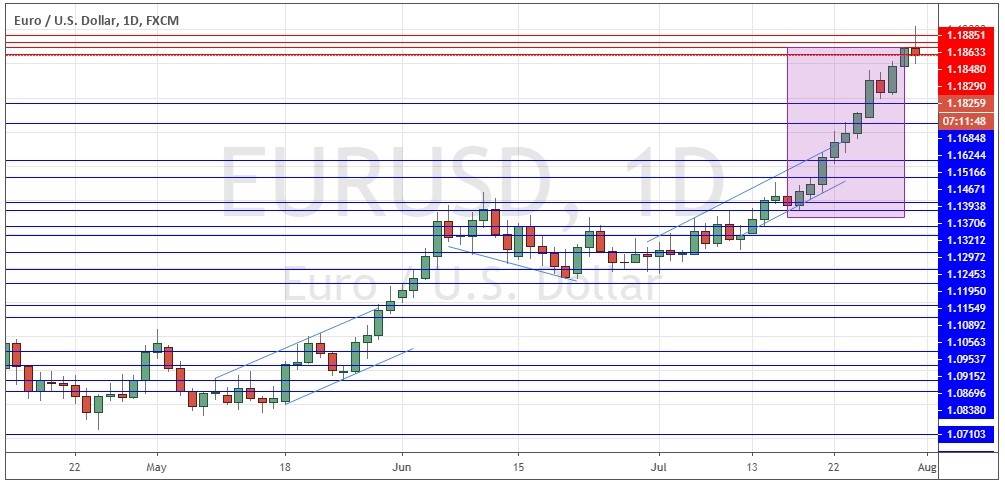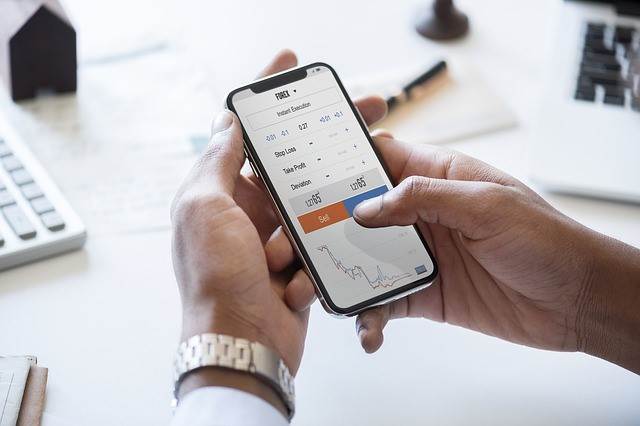Day trading is a short-term trading strategy where traders open & close all trades before the end of the trading day.
Below, you'll find our favorite Forex brokers for day trading, following a thorough examination done by our analysts.
- FXTM, Best all-around broker with high floating leverage and fast execution.
- AvaTrade, Highly regulated, choice of fixed or floating spreads.
- FP Markets, ECN trading with leverage up to 1:500.
- Pepperstone, Great ECN execution on MT4/5, cTader, TradingView and Pepperstone proprietary platform.
- XM, Exception range of assets + negative balance protection.
Best Day Trading Brokers Comparison
 |  |  | .webp) | ||
Regulators | CMA, FCA, FSC Mauritius, FSCA, SCA | ASIC, BVI, Central Bank of Ireland, FFAJ, FSCA, KNF, MiFID | ASIC, CMA, CySEC, FSCA | ASIC, BaFin, CMA, CySEC, DFSA, FCA, SCB | ASIC, CySEC, DFSA, FSC Belize |
Year Established | 2011 | 2006 | 2005 | 2010 | 2009 |
Execution Type(s) | ECN/STP, Market Maker | Market Maker | ECN/STP | No Dealing Desk, NDD | Market Maker |
Minimum Deposit | |||||
Average Trading Cost EUR/USD | 0.1 pips | 0.9 pips | 1.2 pips | 1.1 pips | 0.1 pips |
Average Trading Cost GBP/USD | 0.2 pips | 1.5 pips | 1.4 pips | 1.4 pips | 0.2 pips |
Average Trading Cost Gold | $0.18 | $0.29 | $0.16 | $0.15 | $0.19 |
Trading Platform(s) | MetaTrader 4, MetaTrader 5, Proprietary platform | Other, MetaTrader 4, MetaTrader 5, Proprietary platform, Web-based+ | MetaTrader 4, MetaTrader 5, cTrader, Proprietary platform, Web-based | Other, MetaTrader 4, MetaTrader 5, cTrader, Proprietary platform, Trading View+ | MetaTrader 4, MetaTrader 5, Proprietary platform |
Islamic Account | |||||
Negative Balance Protection | N/A | N/A | N/A | ||
| Visit Website | Visit Website | Visit Website | Get Started Visit Website75-95% of traders on margin lose | Visit Website |
FXTM
In Summary Best all-around broker with high floating leverage and fast executionFXTM is one of the best day trading brokers and one of the best all-around choices. It upgrades the MT4 and MT5 trading platforms with six add-ons and provides mobile traders with its proprietary FXTM Trader. Automated traders have access to VPS hosting, and manual traders benefit from the FXTM Pivot Points Strategy. FXTM also features excellent performance statistics, confirmed by Big Four accountancy PricewaterhouseCoopers Limited (PwC).
FXTM Pros & Cons
Pros & Cons
- Excellent commission-based Forex pricing environment and transparency
- Upgraded MT4/MT5 trading platforms plus proprietary mobile trading app
- Quality market research and educational content for beginner traders
- A highly regulated broker with a tier-1 license
- Limited choice of commodities
AvaTrade
In Summary Highly regulated, choice of fixed or floating spreadsAvaTrade remains one of the best online brokers for day trading with a commission-free trading environment. It also provides new traders a market-leading educational unit with SharpTrader and its 40 lessons and 200 videos. More than 300,000 traders enjoy one of the most regulated online brokers and 24/7 customer support in 14 languages for a minimum deposit of $100 and five payment options. AvaTrade has more than 70,000 affiliates in over 150 countries.
Pros & Cons
- High quality educational offering via AvaAcademy
- Excellent choice of trading platforms catering to various trading needs
- Broad asset selection and cross-asset diversification opportunities
- Well-regulated and trusted broker with oversight from a central bank
- Trading costs competitive but nothing special
FP Markets
In Summary ECN trading with leverage up to 1:500Day traders will find plenty of good features available at FPMarkets which includes both the MetaTrader 4 (MT4) and the MetaTrader 5 (MT5) trading platforms. Both of these world class platforms are available as a desktop client, as well as a WebTrader and a mobile application. Select clients may also qualify for the Iress trading platform, which is restricted, based on your geographical location. FPMarkets also offers twelve plug-ins which are includes with its Trading Tools package, along with its AutoChartist plug-in.
Pros & Cons
- Choice of trading platforms and auxiliary trading tools
- Very competitive cost structure and excellent asset selection
- Low minimum deposit requirement and leverage of up to 1:500
- Well-regulated and trustworthy
- Availability of Iress geographically restricted
Pepperstone
In Summary Great ECN execution on MT4/5, cTader, TradingView and Pepperstone proprietary platformI rank Pepperstone among the best day trading Forex brokers as it features Capitalise AI, enabling algorithmic trading in a code-free environment, ensuring an advantage few brokers can offer. It lowers the entry bar for algorithmic trading, a necessary tool for active day traders. VPS hosting delivers 24/5 low-latency Forex trading, and API trading connects cutting-edge trading solutions to the Pepperstone infrastructure.
Pepperstone upgrades MT4 via the 28-plugin Smart Trader Tools package and Autochartist. Commission-based fees start with raw spreads from 0.0 pips for a commission between $6.00 and $7.00 per 1.0 round lot with a volume-based rebate program.
Pros & Cons
- Excellent choice of trading platforms consisting of MT4/MT5, cTrader, TreadingView and Pepperstone Platform
- Market-leading MT4/MT5 upgrade package, Autochartist, and API trading
- Social trading support via Signal Start, MetaTrader Signals, Copy Trading by Pepperstone, DupliTrade
- Leverage of up to 1:400 depends on jurisdiction and superb trade execution
- Demo accounts have 60-day time limits
XM
In Summary Exception range of assets + negative balance protectionI rank XM among the best Forex brokers for beginners as it provides exceptional education, with the live education room available Monday through Friday between 06:00 and 15:00 GMT at its core. Beginners also receive actionable trading recommendations, and the $5 minimum deposit ensures accessibility to all traders, boosted by deposit bonuses.
XM rewards active traders with a four-tier loyalty program and supports algorithmic traders with VPS hosting. The well-balanced asset selection exceeds 1,000 assets, and the proprietary copy trading service pays signal providers up to 50% profit share. Swap-free trading and low trading fees ensure a competitive edge.
Pros & Cons
- Outstanding trading tools and loyalty program
- Low minimum deposit, high leverage*, and competitive trading cost
- Excellent research and education
- Trustworthy and transparent with generous bonuses and incentives
- Inactivity fee
What is Day Trading?
Let us be clear about what exactly day trading Forex means. It can be defined as sitting in front of a trading screen for a meaningful continuous period of time and making trades that should substantially be closed by the time the trader closes up the computer and is done for the session.
A day trader might be scalping, meaning going for fast trades with very small profit targets of under 10 pips or so, or they might even be swing trading, trying to catch a daily move for as much 200 or so pips. Both can be day trading if these trades are opened and closed within a single session.
How Much Money Do I Need to Day Trade?
There is no minimum requirement placed by regulators or brokers, except in the US, where it is $25,000 due to the pattern day trading rule, which stipulates that anyone making more than 4 day trades in a week must hold at least this much equity in their trading account. Day trading with insufficient capital usually results in losses, and we recommend no less than $5,000 for Forex day trading and $10,000 for equity day trading.
How Day Traders Use Their Online Broker
Day traders require tight spreads, usually in a competitive commission-based trading environment and preferably with a volume-based cashback program. High leverage, full support for automated trading solutions, multi-chart capabilities, and real-time trading information are other services day traders require. Access to deep liquidity and cutting-edge technology with excellent execution statistics will deliver an additional edge.
How Do I Choose the Best Broker for Day Trading?
A competitive day trading platform must support automated trading solutions and allow third-party solutions to connect. It should offer an excellent charting package, and the broker should have no restrictions on trading strategies or high leverage.
Which Brokers Offer Market Rebates for Adding Liquidity?
Brokers with a prime brokerage unit and those acting as liquidity providers to other brokers usually offer market rebates for adding liquidity. Some well-established market makers with a hybrid ECN execution model and pure ECN brokers also maintain volume-based rebates.
Customer Service
Most traders rarely require customer service, if at all, but should always seek a broker with an excellent support team. Unexpected events can happen, like a server outage, a liquidity event, or a security issue. Day trading is stressful even without interruptions and having a responsive customer service desk will smooth over unexpected developments.
Dealing Desk
Day traders should consider a broker with a dealing desk that can place market orders or close open positions per request. It comes at an additional cost but offers an extra security layer if a trader loses market access during volatile markets.
Customer Service Quality
It is not enough to provide customer service, the quality counts. A quick response time and multiple ways to connect remains essential. The best online brokers for day trading offer 24/5 or 24/7 multilingual customer service and answer queries in a matter of minutes.
Extra Offerings
Extra offerings separate the best brokers from good ones. It can consist of deposit bonuses, free trades, VPS hosting at no additional cost, and third-party trading tools that provide an edge to traders. Offering value-added services confirms the commitment of brokers to clients.
Account Levels
Some brokers offer a multi-tiered account approach. Traders get access to improved trading conditions as they ascend the levels, with VIP clients receiving non-trading perks like invites to trendy events. A growing number of brokers dropped this approach. They provide all clients with equal access to services.
Returns on Cash
A few brokers pay interest on free capital, which can offer a nice passive income stream in the negative, zero, and near-zero interest rate environment of today.
Trading Strategy
Day traders need to select a broker without restrictions on trading strategies. Full support for automated trading strategies and no restrictions on scalping and high-frequency trading is a requirement. Social trading remains optional.
Managed Trading Accounts
Several brokers offer managed trading account to clients, and a growing number cater to retail account management via MAM/PAMM accounts or proprietary alternatives. It provides traders the choice to commit capital to an account manager who will bear responsibilities for all trading operations. Managers receive compensation through a performance fee or a profit-sharing agreement. A minimum deposit into a strategy usually applies, higher for a professionally managed account and lower at MAM/PAMM alternatives. Traders may receive an investor password to check the portfolio in retail account management services, depending on the broker and account management system.
Pooled Funds
Pooled funds are the most common professionally managed trading accounts. The returns of the portfolio remain divided among investors according to their share of the capital. Brokers with managed funds usually maintain numerous ones, catering to varying degrees of risk and investment goals.
Individual Accounts
An individually managed account is often the most expensive alternative and comes with the highest minimum capital requirements but provides the most attention to individual trading needs and expectations.
Regulations & Licensing
Day traders should always select a regulated broker, fully compliant and with all required licenses. Not all jurisdictions provide a competitive trading environment, which is another factor to consider. The US and the EU rank at the top of uncompetitive trading conditions, while Australia leads competitiveness among tier-one regulators. South Africa, Dubai, and Singapore are among the most innovative ones, together with a dozen offshore jurisdictions. They include the British Virgin Islands, Seychelles, Belize, the Marshall Islands, the Cayman Islands, and Vanuatu. St. Vincent and the Grenadines remain the primary location for unregulated brokers.
How Brokers Make Money
The two primary methods for brokers to make money is via spreads and commissions. Market makers also earn directly from client losses where they act as the counterparty. ECN/STP brokers derive the bulk of revenues from commissions.
Market Makers
They usually offer commission-free trading environments with higher spreads. Some of the best day trading brokers are market makers with excellent conditions and trading tools, with the more advanced ones offering a hybrid model, including a commission-based ECN/STP model. Several offer traders a choice between fixed and variable spread accounts.
- Fixed Spreads do not fluctuate and remain constant. They are generally higher to compensate for the lack of profit potential for the broker.
- Variable Spreads reflect market conditions plus the broker mark-up. They are necessary for scalpers and high-frequency traders.
Over-the-Counter Brokers (OTC)
OTC brokers can offer day traders access to assets not listed on exchanges. They often include penny stocks, which carry a high degree of risk but also enormous profit potential. Some of the best day traders earn their living trading with OTC brokers in the OTC markets. OTC trading takes place via a dealer network and not a centralized exchange.
Broker Payment Methods
All brokers offer clients bank wires and credit/debit cards as payment methods, but we recommend traders focus on online payment processors. The processing times and costs remain lower, and it allows day traders to keep their trading activities separate from their day-to-day banking needs.
Trading in Different Regions
Since the bulk of trading is online, most traders, except those in the US, may select an international broker with a better trading environment. Before choosing an offshore broker, traders must consider applicable taxes and regulations.
Tax Considerations
We recommend traders consult a tax expert in their jurisdiction to advise on what taxes apply, how to file them, and to get advice on tax optimization. The best brokers for day trading are often in tax-friendly countries, but traders will have to pay taxes in their home country.
Regulation
Before traders select an offshore broker, they must ensure that the regulation is sufficient and protects them from malpractice and fraud. Segregation of client deposits from broker funds and negative balance protection must exist.
A Profitable Day Trading Strategy that Works
Creating a good day trading strategy is quite simple: just take any trading strategy that works on higher time frames such as the daily time frame, and use shorter time frames to take the entries that are already being signaled.
For example, one trading strategy that has a great track record over many years is trading 50-day breakouts on the EUR/USD and USD/JPY currency pairs, using a stop loss equal to one day’s average true range over the last 15 days or so.
You can apply this to day trading by, for example, waiting until the EUR/USD ends the New York session at a 50-day high, and then opening a day trading session the next day and looking for a long trade.

You already know that the daily chart and long-term trend are telling you that the odds are in favor of a long trade, so look only for a long trade. The great thing about day trading like this is that if you catch the turn that day, you might be able to catch a move of say 200 pips of profit if you leave the trade open over several days, but using only a 20-pip stop loss instead of perhaps an 80-pip stop loss you would need when trading this strategy on a daily chart.
I said earlier that day traders close out all their positions at the end of a day’s trading session, but there is no rule saying you have to do this – as long as you make sure there is a reasonable hard stop loss order in place before you switch off. If the price is trending strongly, why not leave at least some of your winning trade in floating profit to run overnight?
The real secret of day trading is that it enables you to make bigger profits through the use of relatively tight stop losses. In the above example, by succeeding with a 20 pip stop instead of an 80 pip stop, you would multiply your profit, your reward to risk ratio, by a factor of four.

The reality is that Forex trading is rather simple. Think about it: you place a trade and either it goes in your favor or not. Every trade you take has a roughly 50-50 chance to work out, maybe as high as 60-40 if you really do well. Markets will either go higher or lower. You can help move the odds a little bit more in your favor if you can find tighter spreads. The spread is essentially the same thing that a casino does on a roulette wheel, with those two green numbers making sure that the red and the black players don’t automatically win half of the gains each. The casino acts as a market maker, keeping everything that hits those two green numbers while the red and the black players throw money back and forth at each other. This is essentially how most Forex platforms work. That is why I say there is “a roughly 50-50 chance to work out.” Due to spreads and other trading fees, it is probably a little closer to 49%.
In the end, a trade either works out or it does not. If you have a little bit of trading acumen, then you can tilt the odds a little further in your favor. Or perhaps you have the ability to hold onto gains much longer than the average trader, and therefore your profits are much larger. In the end, there is no specific magic strategy. That does not mean there are not some things you can do to increase your profitability and the likelihood that you are going to become a profitable trader.
Bottom Line
For day traders to have the best chance of success, it is important for them to use a broker which provides fast and reliable execution and a competitive spread and/or commission. This is because day traders often trade quite large position sizes with tight stop losses and relatively small profit targets, meaning even a fraction of a pip won or lost by good or poor execution can make significant differences to profitability. Overnight swap fees, on the other hand, are not of importance to day traders who close all their open positions before 5pm New York time.
Day traders often seek to use relatively high leverage. Although I argue that the maximum leverage on Forex even in tightly regulated areas like the European Union at 30:1, is more than enough for any day trader, some day traders may want brokers offering even higher maximum leverage. These traders will need to seek brokers who are not regulated in the EU, USA, UK, Australia, or the USA, but are instead operating from more flexible regulatory bases such as New Zealand, Mauritius, or the Seychelles. Day traders often find ECN execution brokers useful as they often offer a competitive overall spread and commission.
Day traders should be careful to choose a broker that meets such needs, but good regulation and safety are an even higher priority, due to the primary importance of preserving capital in trading.
You might also be interested in reviewing the below top brokers:


